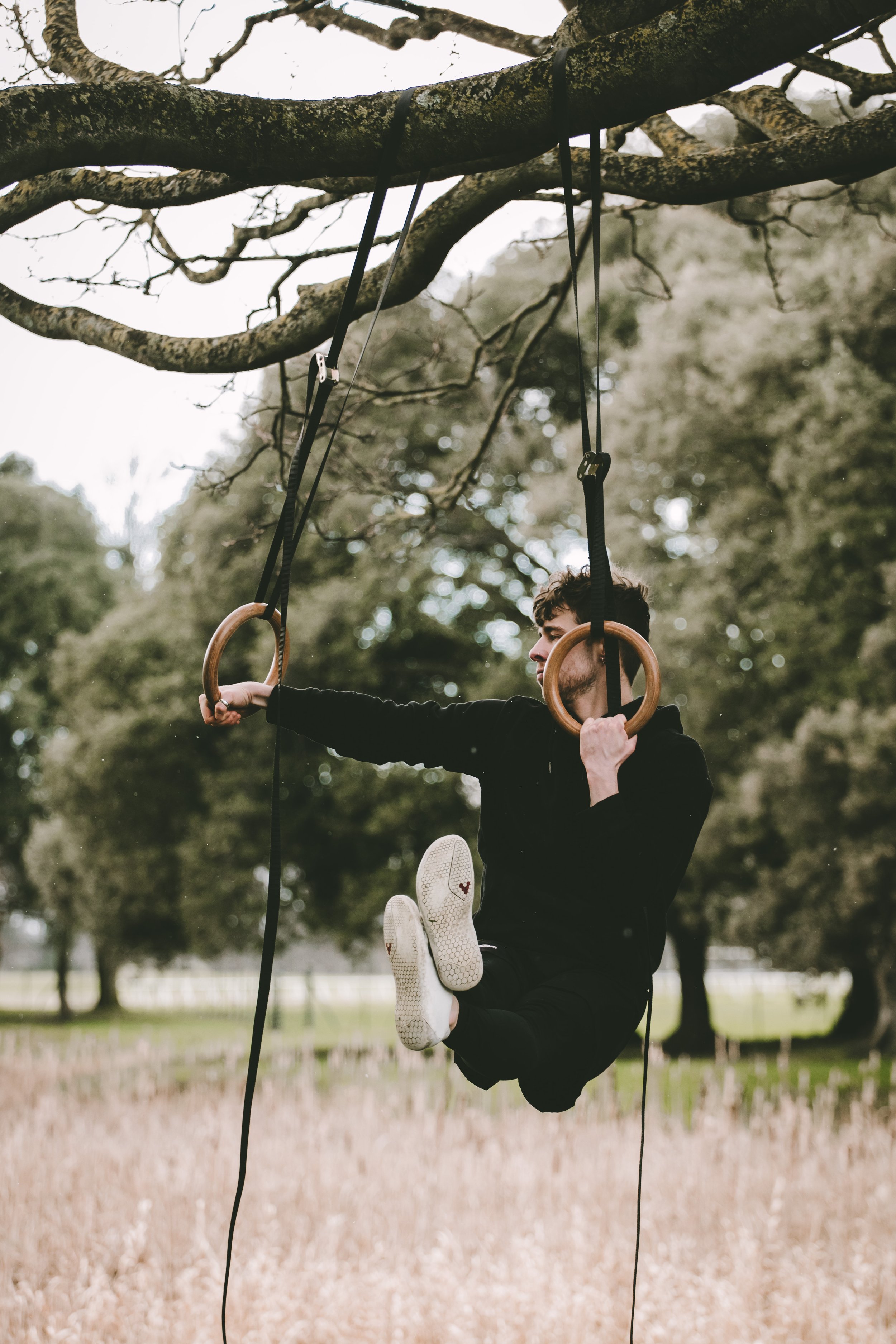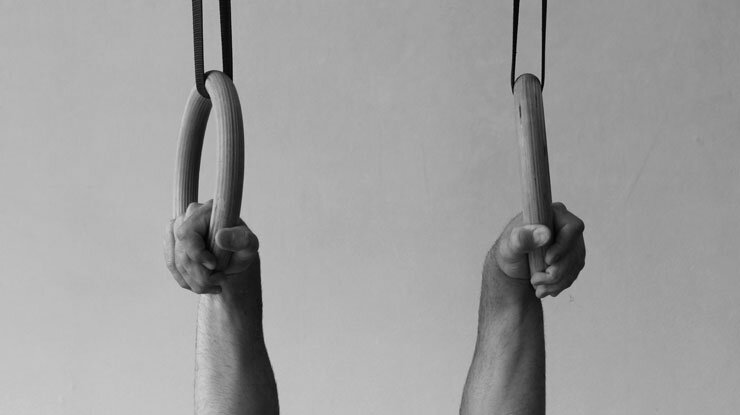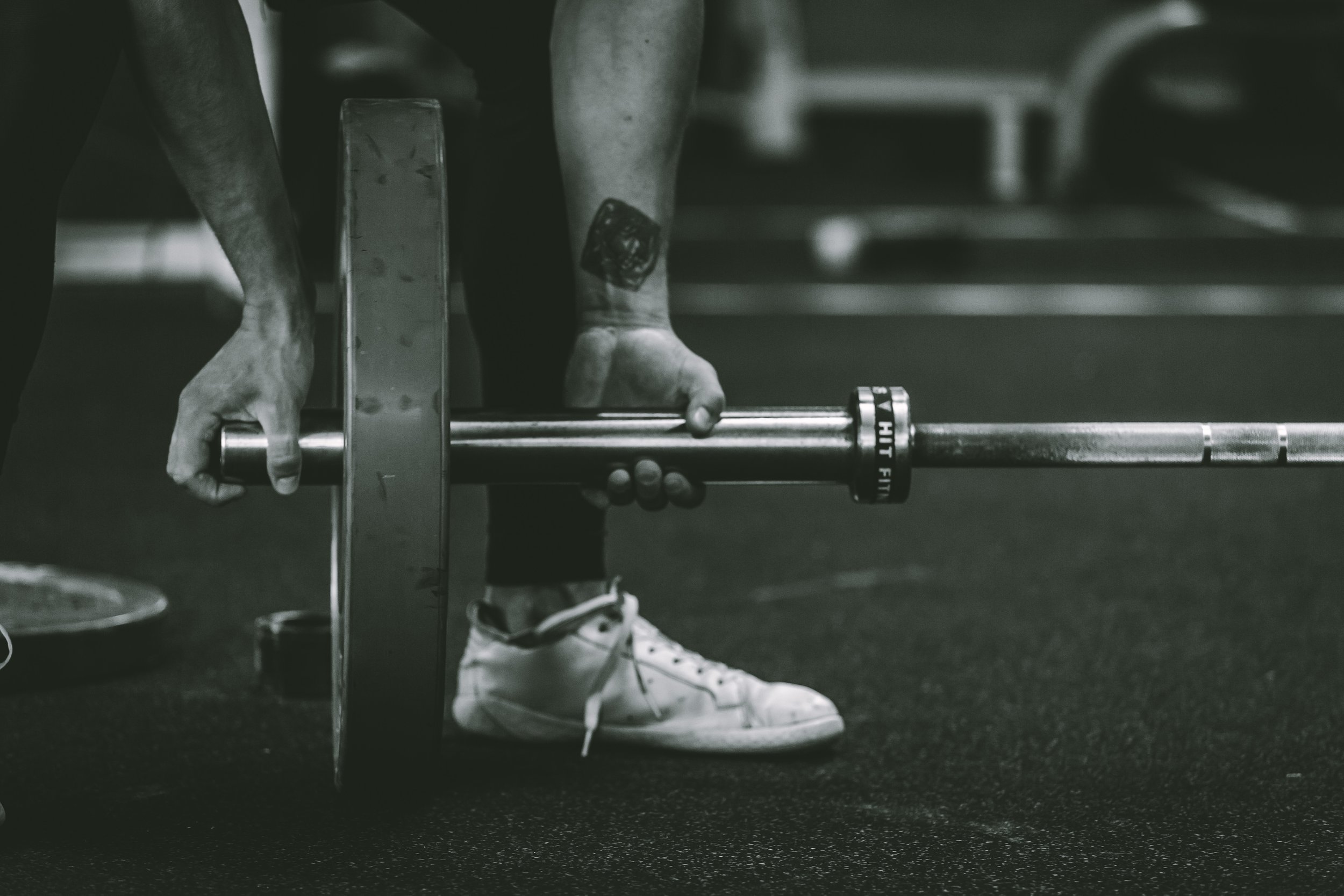‘60 Minute Lunch Counting Down’
Addressing Mobility, Posture and Bio-Mechanical Issues caused by Prolonged Sitting within a 45 Minute Training Session’
- By Simon Griffin
-

Mobility
Mobility is the combination of range of motion in every joint structure and the healthy flexibility of your soft tissue (muscles, tendons and fascia).
-

Posture
Posture is how you hold your body.
There are two types:
Dynamic posture is how you hold yourself when you are moving, like when you are walking, running, or bending over to pick up something.
Static posture is how you hold yourself when you are not moving, like when you are sitting, standing, or sleeping.
-

Bio-Mechanics
Bio-Mechanics is the study of the mechanical movements of the body. Within the context of both the gym, and day to day life, bio-mechanics analyses whether the correct muscles and joints are performing any given motion both correctly and efficiently.
Sitting is considered a physiological stress as it is not a ‘natural bio-mechanical movement or non-movement’.
However, the body is resourceful and will adapt according to lines of physiological stress.
When we have repetitive movement or non-movements such as sitting, this adaptation causes muscles and other soft tissues to remodel to become stronger in the direction of stress.
This typically causes in an imbalance of strength to weakness in joints, resulting in loss of mobility commonly seen in the ankles, scapula, hips and spine.
This loss of mobility in these joints typically results in 1 of 3 issues:
-

Lower Back Pain
-

Knee Pain
-

Shoulder/Neck Pain
Solely treating the area of pain will only get you so far in eradicating your pain, and will likely be a temporary solution.
It’s of course more complicated to look at the body as a whole and see what other joints may be the root of the problem, but it’s also necessary for long-term pain alleviation and functionality according to Mike Boyle & Gray Cook’s Joint by Joint Approach.
Mike Boyle & Gray Cook’s Joint by Joint Approach argues that wherever pain is located in the body, the answer to the problem is usually found in either the joint above or below the area of pain.
Each Joint’s Primary Need through the lens of Mobility & Stability
Gleno-humeral– Mobility
Scapula – Stability
Thoracic Spine–Mobility
Lumbar Spine – Stability
Hip – Mobility (multi-planar)
Knee – Stability
Ankle –Mobility (sagittal)
So, how to address these issues within a 45 minute training session, 3 times per week?
Firstly, it is important to keep in mind the hierarchical nature of differing training disciplines when training for general health, fitness, vitality, weight-loss, especially when training independently or solo.
Some forms of training are more beneficial for the general population than others.
However, by creating an objective, scientific and physiological lens to analyse the benefit of different disciplines of training, we can confirm that resistance/weight training is of most benefit to the general population.
The Hierarchical Lens of Physical Training gives 1 point to each different discipline of training if the training provides the participant with the following physiological result:
Joint Mobility - 1 Point
Joint Stability - 1 Point
Muscle Mass - 1 Point
Cardiovascular Health - 1 Point
Pain Prevention/Management/Alleviation - 1 Point
Mental Health Benefits - 1 Point
Benefits of Different Forms of Exercise
60 Minutes - 3 Days per week
Start of Lunch
00:00 minutes - 00:10 minutes - Preparation
00:10 minutes - 00:15 minutes - Stage 1 - Warm Up
00:15 minutes - 00:30 minutes - Stage 2 - Strength - Compound Exercises - 70-80% of 1RM
00:30 minutes - 00:45 minutes - Stage 3 - Hypertrophy/Cardio - 50-70% of 1RM
00:45 minutes - 00:55 minutes - Stage 4 - Non-Compound Exercises 50% of 1RM
00:55 minutes - 00:60 minutes - Stage 5 - Cool Down/Return to Work
End of Lunch
60 Minute Lunch
5 Primary Movements of the Human Body
Push: (Vertical/Horizontal)
Pull: (Vertical/Horizontal)
Squat
Hinge
Isometrics (Stationary/Paused/’Asana’)
Optimal Standards of Strength to ensure efficient Mobility, Posture & BioMechanics
Male Standards
Vertical Pull: Bodyweight x 5 repetitions
Horizontal Push: Bodyweight x 1 rep
Squat: Bodyweight x 1 rep
Hinge: Bodyweight + 50% of Bodyweight x 1 rep
Female Standards
Vertical Pull: Bodyweight x 1 repetitions
Horizontal Push: 50-70% of Bodyweight x 1 rep
Squat: 75%-100% of Bodyweight x 1 rep
Hinge: Bodyweight + 25% of Bodyweight x 1 rep
Stage 1: Warming Up
What is the purpose of Warming Up?
The purpose of warming up before physical activity is to prepare physically for your chosen activity. Therefore the warm up should be specific to the activity. This means warming up the specific areas of the body that are about to be utilised.
Warming up increases your heart rate and therefore your blood flow. This enables more oxygen to reach your muscles, which in turn causes them to perform better.
Warming up efficiently and gradually charges the Central Nervous System at a steady rate, thereby decreases the short term cortisol-release caused by resistance training within the body, which in turn increases the positive hormonal effects of weight training in the long run.
Stage 2: Strength
Strength - Compound Exercises - 70-80% of 1RM
Different Phases of Strength Training
Choosing the compound exercise(s): Push (Horizontal/Vertical) / Pull (Horizontal/Vertical) / Squat / Hinge
Warm Up Sets
Working Sets
Technique Sets: Technique sets are usually compound exercises performed at a sub maximal load, usually 30-40% of a 1RM.
They are used to provide the opportunity to address technical faults and issues that would go unaddressed in working sets with maximal loads.
Strength Training is ideally performed in physiological isolation, ie. with minimal additional physiological stresses on the body other than the load of the chosen exercise.
In Terms of Mobility:
Last week, we looked at Greek researchers who examined groups of men who trained with loads at 40, 60, or 80% of their 1RM or one-rep max. The results showed that higher intensities were linked with greater improvements in mobility/flexibility. That is, the men who trained at 80% of their 1RM were the ones who saw the greatest improvements in their mobility.
For more information on this topic, please see my article, Mobility, a free gain of intelligent weight training, an elusive dream in yoga
In terms of Muscle Growth/Hypertrophy:
According to a research review by Brad Schoenfeld (2010) called The Mechanisms of Muscle Hypertrophy and their Applications to Resistance Training, “Intensity (i.e. load) has been shown to have a significant impact on muscle hypertrophy and is arguably the most important exercise variable for stimulating muscle growth.”
For more information on this topic, please see my article, ‘It’s time to put down the kettlebells from TK Maxx’.
Stage 3: Hypertrophy & Cardiovascular Health - 50-70% of 1RM
Choosing the compound exercises to be performed as a Superset (back to back): /Tri-set (back to back to back): / Circuit (typically 4 or more exercises performed in rotation).
Push (Horizontal/Vertical) Pull (Horizontal/Vertical) / Squat / Hinge
The use of supersets, tri-sets and circuits increases the positive impact of weight training on cardiovascular health (work capacity) by performing exercises with a shortened rest period after each set.
Stage 4 - Non-Compound Exercises 50% of 1RM
Stage 4 provides an opportunity to address secondary movement patterns, alongside muscles groups that are not sufficiently addressed within stage 2 and 3 of training.
Ideally the chosen exercises will both create positive muscular damage, but also reinforce and protect the bodies joints to better prevent bio-mechanical issues or injuries in the future.
Additionally, they can be performed at speed to increase both work capacity and cardiovascular health.
Stage 5 - Cool Down
Is there a need to stretch at the end of training?
No. Your joints have already gone through their full range of motion in each chosen exercise during your training.
For more on this please see my article, For the love of God, stop stretching!
This is an opportunity to address cortisol levels in the body and to slow the Central Nervous System (CNS).
Diaphragmatic Breathing is typically the best cool down following the aforementioned training.
How is your head?
According to an article published in 2018 in the Irish Journal of Medical Science which examined the correlation between mental health and physical exercise, (involving 7539 participants), those who met the basic physical exercise levels routinely typically scored higher on the Energy and Vitality Index (EVI) and the Mental Health Index-5 (MHI-5), compared with those who did not met daily phsyical exercise standards.
This confirms what we already know:
Exercise benefits not only your physical health, but your mental wellbeing also.
For more information and resources like this, consider joining the 360Movement Online Coaching Portal which includes:
-

Monthly Programs
-

Monthly Nutritional Check-In
-

Joint Mobility & Stability Series
-

Email/WhatsApp Support
-

Blogs & Articles
-

Video Tutorials for All Exercises
Subscribe to Online Coaching below with one of the following options:















